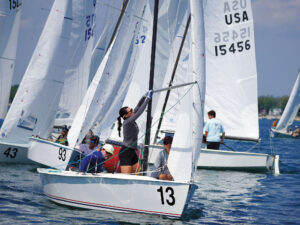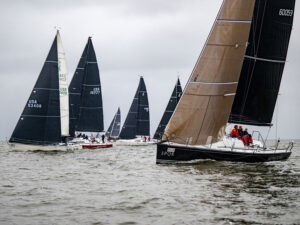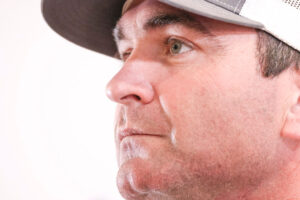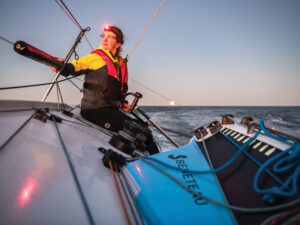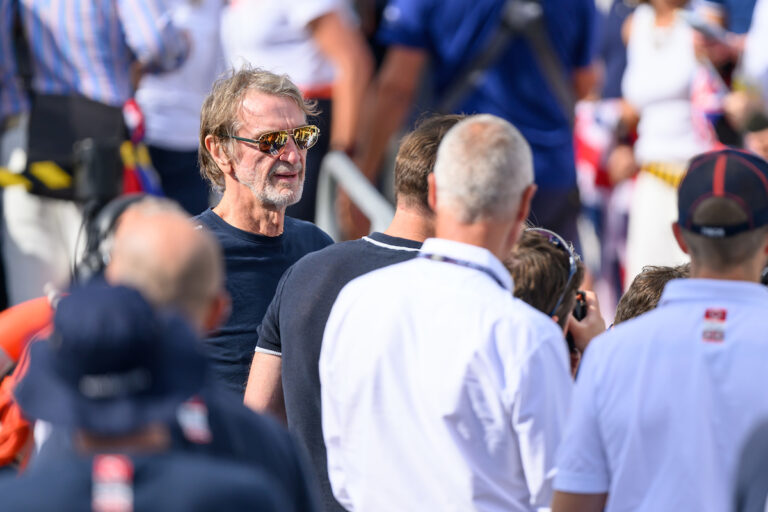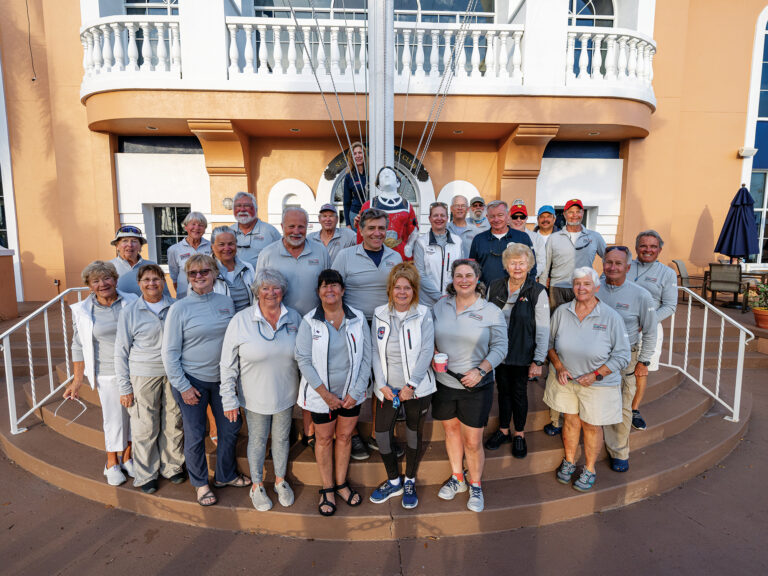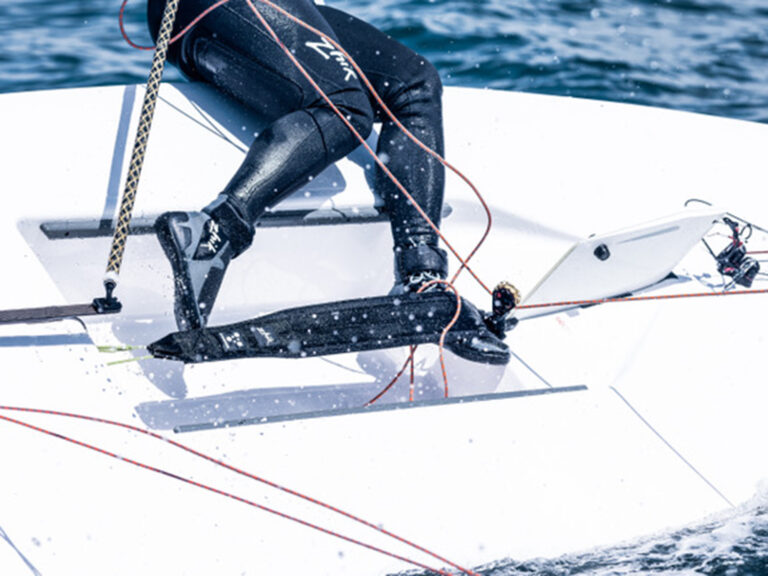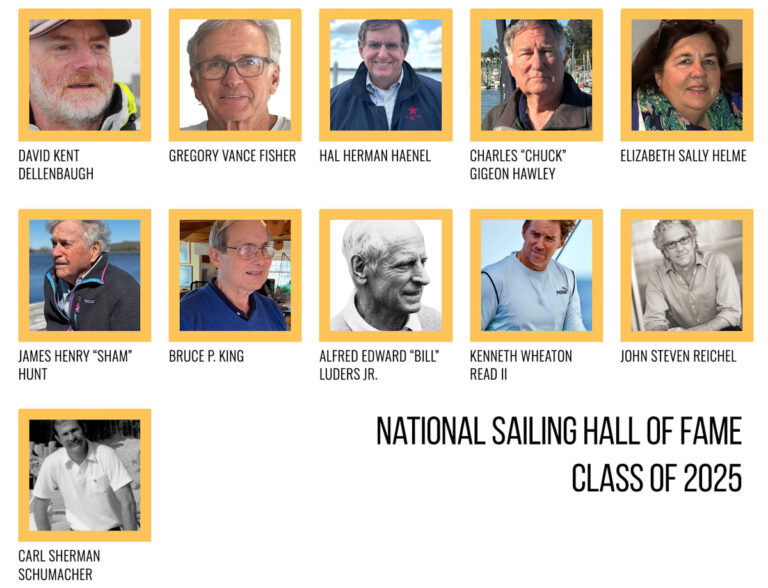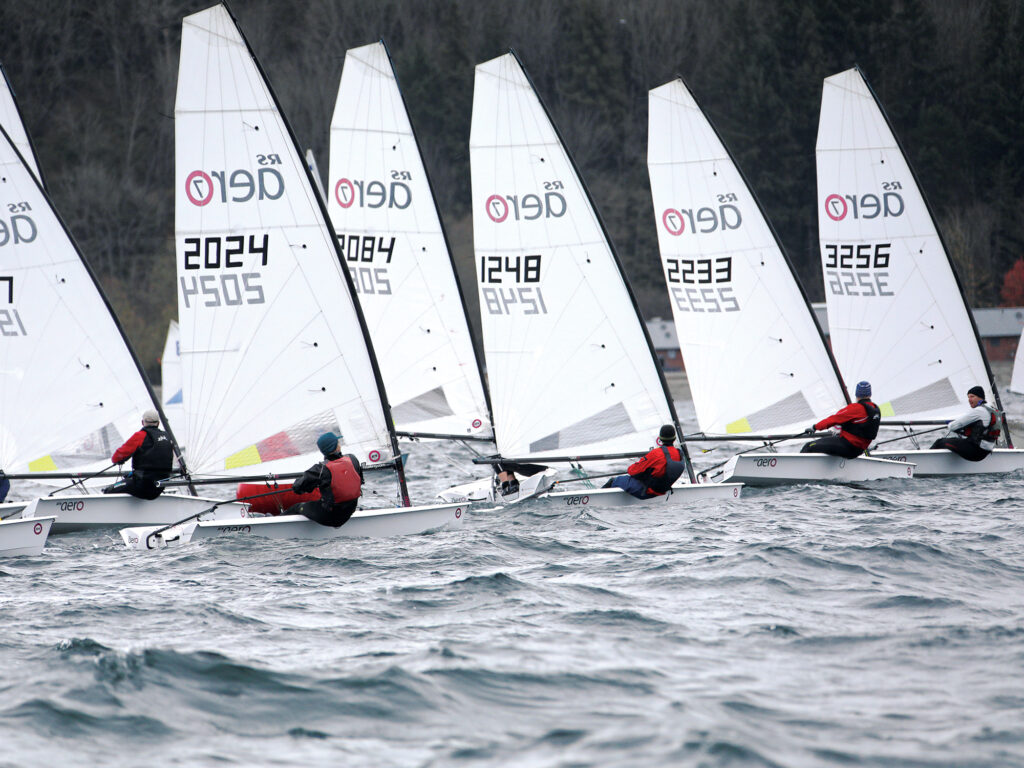
Sometimes our sport can be frustrating, while other times everything just falls into place. I experienced the latter one recent evening while racing my Aero dinghy. This particular Thursday-night race featured a classic 12- to 18-knot southerly blowing off Shilshole in Seattle. The tactics can be tricky in this wind direction, but it is understandable and intuitive to someone who has raced these waters for 50 years. This night favored the right side of the racecourse, and I managed to clue in to that. My upwind speed is usually not great, but this evening, I got the sail flat enough and worked on steering precisely to control heel, and I was in the hunt. One thing that really helped was spending a solid 20 minutes going upwind and downwind before the race with another boat. I burned a bunch of my limited energy, but I got myself in the groove. It helped that the waves were skewed and moderate, so staying fast was not that hard, as long as I could hike effectively.
I missed the first start because I thought we were using a five-minute sequence instead of three. This was not a great way to start the night, but I didn’t get down, and after that, I got good starts and sailed pretty well to get three top-five scores. Driving home, I was really happy. Maybe I was finally figuring out how to sail the Aero.
The following Thursday night, I arrived with high hopes, confident I could pick up where I’d left off the previous week. But it was not to be, and as it is with solo sailing, there was no one to blame except myself. On this occasion, a 14- to 18-knot northerly combined with an ebb tide was kicking up huge waves off Shilshole. It was going to be a fun night, I told myself. Well, the downwind legs at least. A few more good sailors showed up to play, so the field was a little bigger and deeper.
Unlike the previous week, I had a good first race thanks to a decent start and average speed. I went the right way, so I rounded the top mark in third and finished fourth. It was a happy start to the night, but in the next two races, I was hopeless: terrible starts, slow upwind, bad tactics, and nothing special downwind. I could barely see the leaders.
What the heck? One week earlier, I was right there. Did I just suddenly forget how to sail?
Let’s face it: Sailing is a complex sport with a lot of variables. To succeed, we have to get a lot of things right. On the first Thursday, I got most of the big things correct—good starts and tactics, and enough speed. On the second Thursday, I got most of the important things wrong—poor starts and bad speed, which contribute to bad tactics. Next thing I knew, the leaders were way ahead. It’s not magic.
Contrasting the two nights, I have my takeaways:
- Warming up is important. I need to make and take the time to sail hard before the start, both upwind and downwind.
- Boatspeed is king, especially in bigger waves. I need to learn to make the boat easier to drive in waves, and I need to be able to hike more consistently. It’s as simple as that.
- Starting is a weapon. Even if I’m slow, the race will always be a lot easier with a good start. So I need to make this a focus and do my practice starts every time.
- It’s difficult to have great tactics when I can’t hold my lane, but I must keep trying to go the right way and not get desperate.
- When the level of the fleet gets higher, I must adjust my goals accordingly. I can’t let disappointment dictate my decisions when good sailors are beating me. I have to accept that it is a privilege to have them to race against, and use them to get better myself.
What’s great about a long weeknight racing season is that there’s always a next week. We can use the time between races to put a bad result behind us and make our plan to move forward with what we learned. Come Monday, I am already thinking about Thursday night’s race, reminding myself that I can do better. I can follow my own advice. I can leave behind any doubts. I can even go out and practice earlier in the week to stretch out my hiking muscles, get better at tacks, work on my technique—upwind and downwind. I can play in the waves and find my groove. I can feel it now; Thursday’s going to be great. And if it isn’t? Well, there’s always next week.

